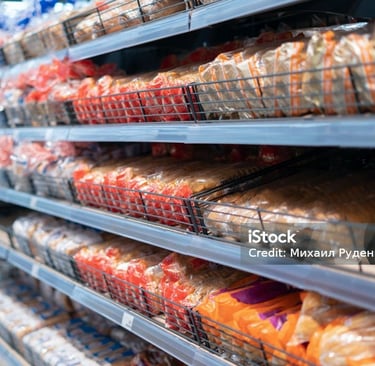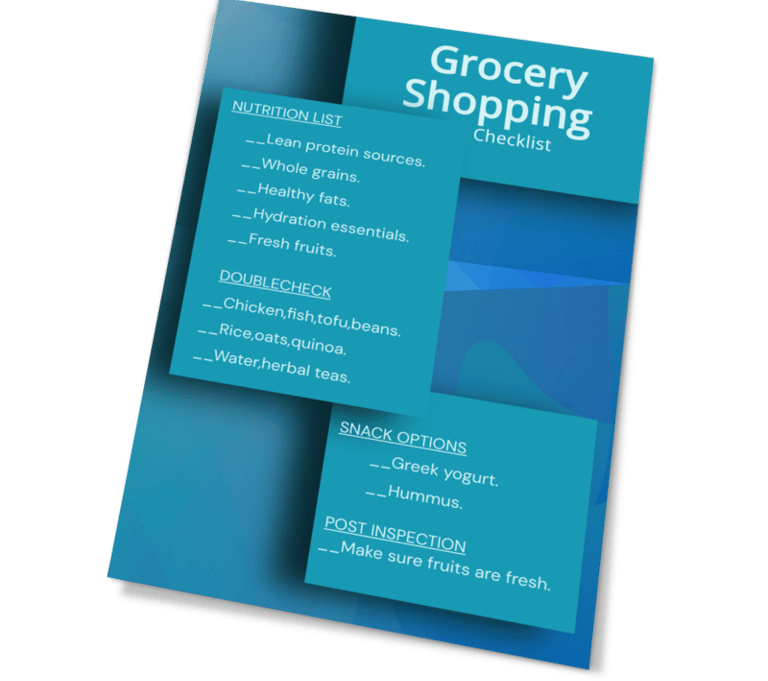Visit Innatefit1.com for exercise wear and equipment!!!
Ultra Processed vs Whole Foods: Why the Difference Matters More Than Ever
Learn the difference between ultra-processed vs minimally processed foods, identify hidden dangers, clarify if bread is ultra-processed, and discover practical steps towards healthier whole-food eating choices.
SELF-HELPHEALTHY LIFESTYLENUTRITION AND RECOVERYHEALTHWEIGHT LOSS
Joseph Battle
6/25/20256 min read


As we navigate grocery store aisles overflowing with convenience items, making healthy choices can feel overwhelming. Amidst the colorful packaging and enticing promises, a hidden battle unfolds daily: ultra-processed vs. minimally processed foods.
But why does this difference matter so much in our diets? Today, we delve into the intricacies of food processing, explore real-life examples, debunk common myths (is bread ultra-processed?), and offer practical steps to regain control over your plate and overall health.
Recognizing the distinction between minimally processed foods and ultra-processed foods has never been more crucial. As evidence mounts pointing to alarming connections between ultra-processed products and adverse health outcomes, understanding these food categories empowers you to make informed choices. Let's embark on this detailed exploration to decode food labels, clarify nutrient quality, and revitalize your eating habits.
Ultra-Processed vs. Minimally Processed: The Science Behind Food Processing Levels
Before you overhaul your grocery list, it's essential to grasp the precise definitions of ultra-processed vs minimally processed foods. Food processing exists on a spectrum ranging from minimal processing—such as bagged spinach—to highly altered foods, like flavored chips. Clarifying these levels enables us to evaluate better nutritional quality, health risks, and the overall impact on wellness.
Minimally processed foods undergo slight alterations that preserve their nutritional integrity, such as washing vegetables, pasteurizing milk, roasting nuts, or freezing fruits. These processing methods may extend shelf life and improve safety, while retaining much of the original nutrients.
For instance, when you purchase frozen blueberries or pasteurized milk, you're choosing minimally processed foods rich in essential vitamins and minerals, free from additives.
In stark contrast, think of ultra-processed foods as foods that bear little resemblance to their original ingredients. Manufacturers combine isolated substances, such as sugars, preservatives, synthetic additives, flavor enhancers, coloring agents, and heavily refined oils. Often, ingredients you can't identify or pronounce dominate their lengthy ingredient lists.
Studies repeatedly link regular consumption of ultra-processed foods with heightened risks of chronic diseases. For example, research shows significant connections between these products and obesity due to their high calorie and sugar content.
Similarly, they're associated with elevated risks of type 2 diabetes, cardiovascular disease, and even mental health disorders. Nutritionists attribute these dangers not just to additives but also to the absence of beneficial dietary fiber and nutrients inherent in whole and minimally processed foods.
Understanding the food processing spectrum can transform your dietary habits. The more frequently you choose minimally processed options, the closer you stay to nature's original nutritional profiles, effectively minimizing health risks.
Conversely, an increased reliance on ultra-processed items may crowd out opportunities to consume essential nutrients, fiber, and antioxidants that are naturally present in fresh, wholesome foods.
Decoding Your Grocery List: What Are Minimally Processed Foods
With a clear grasp of definitions, let's strategize how you can practically identify minimally processed foods in your local grocery stores. So, what are minimally processed foods exactly, and how can you recognize them instantly? Let's demystify product labels and marketing claims one step at a time.
Minimally processed foods typically consist of items that are closest to their original state, such as fresh produce, whole grains, eggs, legumes, milk, unseasoned meats, nuts, and seeds. Packaged options, such as canned beans, frozen vegetables, dried lentils, pasteurized dairy, and whole-grain oats, also count as minimally processed, provided they're devoid of unnecessary additives, sugars, or artificial ingredients.
During shopping trips, prioritize the store's perimeter. Fresh fruits and vegetables, eggs, dairy products, and meats often line the outer aisles, while highly processed snacks, sugary cereals, and candy dominate the middle aisles. Additionally, adopting the habit of turning packages over helps quickly distinguish minimally processed options from highly processed imposters.
Short ingredient lists with recognizable foods—or single-ingredient items—lead directly to minimally processed nutrition goldmines.
Simple label-reading rules can dramatically simplify decisions. Look for labels with minimal or no added sugar, sodium levels below 5% of the daily value, fiber-rich ingredients, and the absence of chemical preservatives or artificial flavors. Organic produce and products labeled "100% whole grain" or "unsweetened" also tend towards minimal processing.
Making these informed choices can immediately boost your dietary habits and overall health. You'll find that these minimally processed foods deliver superior satiety due to their higher fiber content, which helps stabilize energy levels throughout your day. Filling your cart with choices that closely reflect nature ensures lasting nutritional satisfaction, rather than fleeting sugar highs and crashes from ultra-processed snacks.
Unmasking the Culprits: Ultra-Processed Foods Examples List and Hidden Dangers
Awareness starts with knowledge. Let's reveal a comprehensive list of examples of ultra-processed foods to strengthen your grocery vigilance. Many consumers unknowingly consume these products daily, unaware of their disguised nutritional emptiness and potential health consequences.
Picture your usual convenience items—soda, energy drinks, flavored milk beverages, candies, cookies, sweetened breakfast cereals, frozen dinners, highly refined baked goods, microwave-ready meals, margarine, fast-food burgers, sausages, chicken nuggets, chips, crackers, store-bought sauces, and sugary snacks—these notoriously classify as ultra-processed foods due to extensive ingredient modification and chemical additives.
Hidden dangers make these foods especially problematic. Manufacturers often add significant quantities of added sugars, sodium, unhealthy refined fats, chemical stabilizers, emulsifiers, artificial colorants, and flavor enhancers. Collectively, these additions promote overeating behaviors, increase inflammation, and disrupt the balance of healthy gut microbiota.
Dangerously, ultra-processed foods' addictive flavoring makes mindful portion control challenging, directly feeding into the obesity epidemics and related chronic health issues. Popular products, such as flavored yogurts, salad dressings, granola bars, or frozen pizzas, often masquerade as "healthy" but contain surprising amounts of sugar, saturated fats, and chemicals, often behind deceptive marketing tactics.
Scrutinizing these labels helps mitigate hidden risks associated with consumption. Be aware of food items heavily marketed towards children; cereals featuring cartoon characters and sugary fruit snacks typically meet the criteria for ultra-processed foods. Your increased awareness of specific ultra-processed foods significantly enhances your nutritional savvy, empowering you to make healthier choices.
Investigating the Bread Aisle: Is Bread Ultra-Processed? A Closer Look
A frequently asked question when discussing processing levels inevitably arises—is bread ultra-processed? The truth? It depends entirely on individual products and brands, making bread selection somewhat tricky.
In its simplest form, bread only requires basic, wholesome ingredients—whole-grain flour, preferably organic, water, salt, yeast, and possibly minimal natural sweeteners. Minimally processed bread may utilize traditional fermentation practices, thereby maximizing nutritional availability and digestibility.
Look for short, straightforward ingredient lists that highlight whole grain or whole wheat flour first, and minimal added sugars or artificial additives.
Unfortunately, mass-produced varieties often fail to meet these standards significantly. White bread, buns, bagels, refined loaves, flavored wraps, and pastries frequently feature complex ingredient lists that are saturated with preservatives, dough conditioners, bleaching agents, and excessive sugars. Manufacturers utilize these additives to prolong shelf life, artificially enhance texture, optimize production speed, and increase palatability, often at the expense of nutritional value.
Familiarize yourself by carefully examining labels. Opt for stone-ground whole-wheat options, sourdough-fermented breads, sprouted-grain breads, and artisan-made selections. Avoid commercial bread with excessive sugar variants (such as corn syrup, fructose, and malt syrup), hydrogenated oils, and lengthy synthetic additive lists.
Transforming your bread choices dramatically boosts nutrients while minimizing risks. Whole-grain bread supplies valuable dietary fiber, B-complex vitamins, minerals, and beneficial antioxidants absent in ultra-processed counterparts. Understanding the nuances of ultra-processing in bread helps preserve nutritional benefits in your daily staples, safeguarding your health in the long term.
Making the Shift: Ultra-Processed vs Whole Foods - Practical Steps to Transition
Equipped with newfound awareness, you're likely motivated to transition your diet favorably between ultra-processed vs whole foods. Practical, incremental modifications ensure sustainable success rather than overwhelming immediate overhaul.
Begin aiming for swaps individually. Replace sugary cereals with whole oats and fresh fruit for a healthier option. Substitute frozen microwave dinners with simple, homemade meals, such as brown rice, beans, and veggies cooked in olive oil. Gradually phase out sugary sodas; prioritize sparkling water infused naturally or herbal teas without added sweeteners.
Continually practice mindful shopping behaviors. Prepare grocery lists beforehand. Avoid shopping when hungry. Allow sufficient time to browse labels thoroughly. Consider meal-prepping strategies that specifically emphasize whole grains, vegetables, legumes, lean proteins, and healthy fats.
Aim to cook at home more frequently. Learning versatile basic preparations significantly simplifies dietary adherence. Invest in high-quality kitchen knives, cookware, storage containers, and reliable kitchen gadgets to simplify the process of nourishing homemade creations daily.
Over time, your taste buds adjust remarkably, significantly reducing cravings. Empowered dietary decisions can directly enhance sleep quality, nourish gut health, stabilize mood, and effectively prevent chronic disease risks.
Conclusion: Your Dietary Empowerment Journey
Choosing between ultra-processed vs whole foods matters profoundly. Embrace nutritional empowerment through informed awareness, detailed label scrutiny, and proactive dietary improvements. You provide yourself with unrivaled wellness potential in the long term. Let this detailed guide help you establish healthier, lifelong eating habits.




